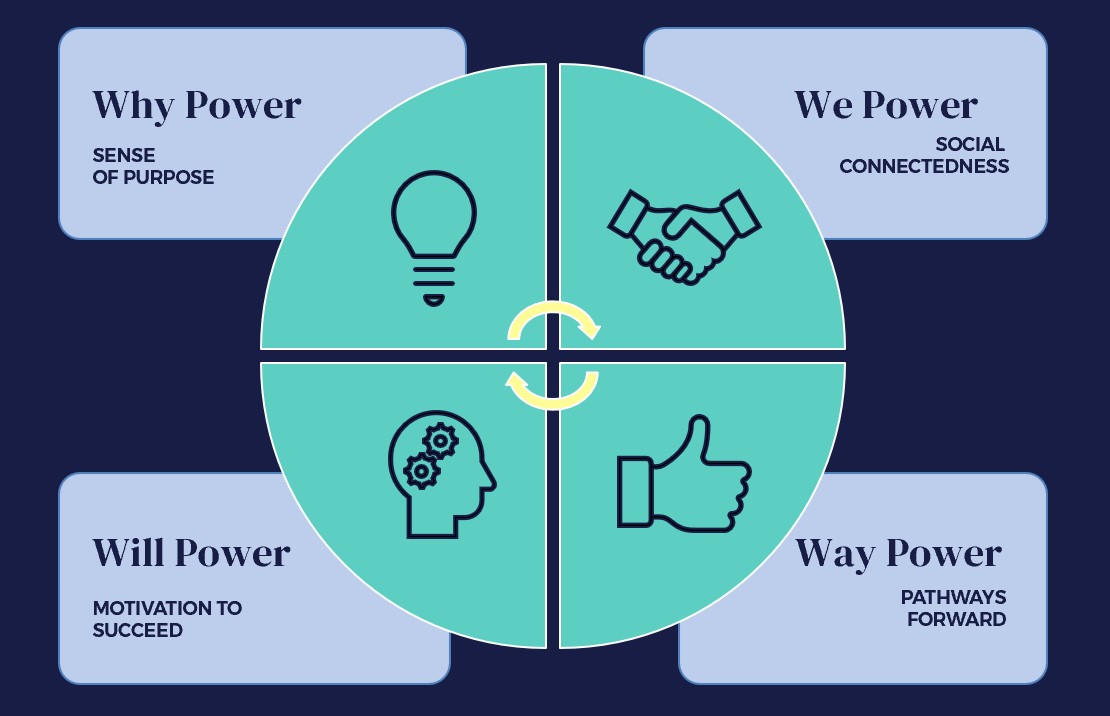Has Hope ever deceived you?
We see it in political campaigns, hear it in advertising, and tell ourselves to ‘stay hopeful’ as if that alone will change things. So we wait… but nothing happens.
That’s because real hope isn’t passive – it’s about action.
This is something I learned in my studies… Hope isn’t just a feeling or thought, it can be a verb too.
People high in hope don’t just set goals and wish for the best. They create pathways, anticipate challenges, and take action. They don’t sit back and hope things will improve – they make sure they do.
Hope is something you build. And the strongest teams I know don’t just wish for success – they are driven by hope, and because of that, they achieve it.
Without hope, people can disengage, lost momentum and burn out. The best leaders and workplaces don’t let that happen – they build hope.
Isn’t Hope just Optimism?
Optimism is believing things will get better. Hope is knowing you can make things better. It’s not wishful thinking – it’s action.
Hope researcher, Rick Snyder, defined it as more than just positive thinking. It’s an active process that involves:
-
Goals – A clear vision of what you want to achieve.
-
Pathways – Multiple strategies and routes to get there.
-
Agency – The belief you can make it happen.
Hopeful people don’t stop when they hit roadblocks – they adapt and find another way. They don’t just say, “I hope this works out.” Instead, they ask, “What’s my next move?”
Some people think hope is soft, something ‘nice to have.’ But research shows it’s the difference between teams that thrive and those that break under pressure. Hope isn’t fluffy – it’s fuel.
Building Hope
One of my former teachers and colleagues, Dr. Rachel Colla, expands on Snyder’s work by identifying two additional resources that strengthen hope – We Power and Why Power (2022).
Together, these four elements build hope:
-
Way Power– Do you have a clear path forward? Have you planned alternate routes?
-
Will Power – What sort of motivation sits behind your goal?
-
We Power – Who can support you? What networks, mentors, or role models keep you moving?
-
Why Power – What’s driving you? A compelling purpose fuels resilience and determination.
Enter self-concordant goals – goals that come from within (Sheldon & Elliot, 1999). They are the difference between forcing yourself to chase a goal and feeling pulled toward it. Research shows that when our goals align with our personal values, interests and identity, we’re more likely to stay motivated and succeed.
Here’s a quick test: Think of a past goal you gave up on. Now ask yourself, Was this something that really mattered to me? Or was I pursuing it for someone else? If it wasn’t self-concordant, that might explain why it didn’t stick.
Motivation Matters
When we talk about motivation, we often focus on willpower – just push through, stay disciplined, try harder! But real motivation is about more than effort. In fact, relying on willpower alone is one of the fastest ways to fail.
Sheldon and Elliot, two researchers, identify fours types of goal motivation:
-
External – Pursued because someone else expects it (e.g., “I’m doing this because my boss wants me to”).
-
Introjected – Driven by guilt or shame (e.g., “I’ll feel bad if I don’t do this”).
-
Identified – Pursued because it’s personally important (e.g., “This matters to me and my future”).
-
Intrinsic – Done purely for enjoyment (e.g., “I love doing this”).
Hope isn’t just a mindset – it’s a strategy. And that’s exactly what I teach leaders and teams to embed in their approach.

Why do we need Hope?
Hope isn’t just a nice-to-have, it’s a key predictor of success and wellbeing. Studies show that people with high hope are more likely to achieve more, persist longer, and thrive in all areas of life.
-
They perform better at work (Peterson & Byron, 2008)
-
They experience greater wellbeing (Gallagher & Lopez, 2009)
-
They build stronger relationships (Snyder, 1994)
-
They even live longer (Stern, Dhanda, & Hazuda, 2001).
This isn’t just about individuals, hope is a leadership advantage. Gallup’s latest research shows that when leaders cultivate hope, teams are more engaged, resilient, and driven. Without it, motivation fades, and progress stalls.
This should be a wake-up call for leaders. If you’re not actively building hope, you’re holding your teams back.
How can our Workplaces help?
Hope isn’t just personal – it’s a game-changer in organisations. When workplaces cultivate hope, they foster engagement, innovation, and resilience in their teams.
Gallup’s research found that people expect leaders to provide hope more than any other leadership trait (64%) – far exceeding trust (27%). Leaders who instill hope create high-performing, motivated teams that persist through uncertainty and change, because they have something to look forward to.
If leaders don’t create a sense of hope and show the way forward, no one else will. And without hope, progress stalls, engagement drops, and teams lose momentum.
Here’s how workplaces can actively build hope:
-
Help employees uncover their Best Possible Self – Encourage them to envision their future success.
-
Set meaningful goals – Move beyond standard KPIs. Align work with a bigger purpose.
-
Encourage multiple pathways – There’s never just one way to succeed.
-
Foster psychological safety – People need to feel safe to try, fail, and adapt.
-
Be intentional about ‘Who Power’ – Strong mentors, peers, and role models matter.
-
Recognise progress, not just outcomes – Small wins build confidence and long-term hope.
Workplaces that cultivate hope don’t just drive performance – they create resilient, thriving teams.
Hope isn’t foolish, and it’s not something we simply wait for – it’s something we create. As German philosopher, Paul Tillich said “Hope is easy for the foolish and hard for the wise”.
The strongest teams I work with aren’t just hopeful – they’re actively building hope into their culture, strategy, and mindset.
Hope isn’t a feeling but a choice.
So, are you building hope?




